Safety and Accessibility
Empowering Independence: Top 10 Home Modifications for Safer Senior Living
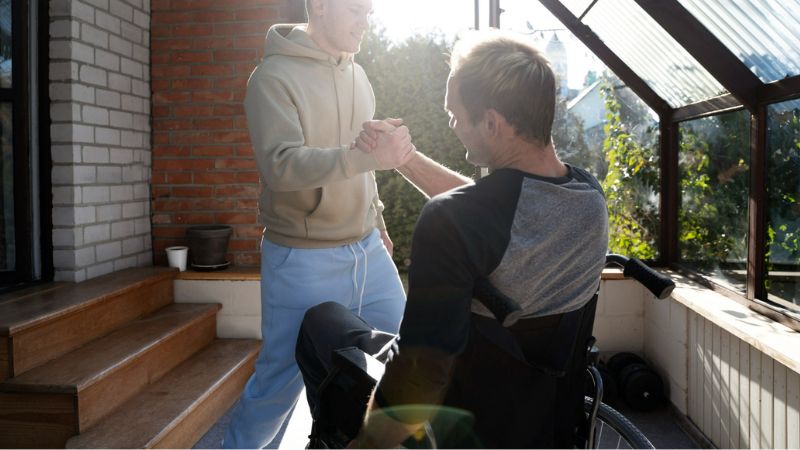
Living independently as a senior can be enriching yet challenging. Making strategic modifications in the home can greatly enhance both safety and comfort, allowing seniors to maintain their independence and continue to enjoy life in familiar surroundings. This article explores the top 10 home modifications that promise to make senior living safer and more comfortable. Whether you are a senior, a caregiver, or a family member looking to make a home more accommodating, these adjustments can make all the difference.
Home Modifications for Safer Senior Living:
Broaden Your Doorways
As mobility aids such as walkers and wheelchairs become necessary, the standard doorway width can become a barrier. Widening doorways to at least 32 inches can facilitate easier and safer movement throughout the home. This modification not only enhances accessibility but also helps in avoiding bumps and falls that are common with narrower passageways.
Ramps to Replace Stairs
Stairs can pose a significant risk for falls. Installing ramps with gentle inclines can provide a safe alternative for seniors navigating in and out of their homes. Ramps are essential, particularly for those using wheelchairs or scooters, ensuring they can move freely without the risk of stair-related accidents.
Bathroom Safety Enhancements
Bathrooms are high-risk areas for slips and falls. Installing grab bars by the toilet and in the shower can offer stability and support for seniors. A walk-in bathtub or a zero-entry shower can also significantly reduce the risk of falls, making the bathroom safer and more accessible.
Improved Lighting
Enhanced lighting can make a significant difference in a senior’s ability to move safely around the home. Bright, clear lights help in reducing the risk of trips and falls that can occur due to poor visibility. Consider adding extra lighting in hallways, stairways, and between the bedroom and bathroom.
Non-Slip Flooring
Replacing high-gloss tiles or slippery carpets with non-slip flooring options such as textured vinyl, slip-resistant tiles, or properly secured area rugs can drastically reduce fall risks throughout the home.
Adjustable Countertops and Sinks
Kitchen modifications can also significantly contribute to a senior’s independence. Adjustable countertops and sinks accommodate wheelchair users and those who find it difficult to stand for long periods. Lever-style faucets that are easier to use than traditional knob designs can also be a great addition.
Smart Home Technologies
Integrating smart home technology can enhance senior safety by simplifying tasks and increasing accessibility. Voice-activated systems can control lights, lock doors, and even operate appliances, reducing the need to move around frequently.
Accessible Storage
High cabinets and shelves are not only inconvenient but also potentially dangerous for seniors trying to reach them. Installing lower storage solutions and pull-out shelves can prevent strain and the risk of falls associated with stretching or climbing to reach items.
Emergency Response Systems
Having an emergency response system in place can provide peace of mind for both seniors and their loved ones. These systems can alert medical personnel and family members in the case of an accident, ensuring quick assistance when needed.
Personalized Modifications
Finally, consider any specific medical needs or mobility issues the senior may have and tailor home modifications to fit those needs. This could mean custom railings, specialized medical equipment spaces, or even modifications to entryways and exits for ease of emergency egress.
By implementing these top 10 home modifications, seniors can significantly improve their quality of life through enhanced safety and greater independence. These changes not only make a home more comfortable but also safer for seniors, allowing them to enjoy their space without fear of accidents.
For seniors and their families, taking proactive steps to modify a home can be a wise investment in long-term safety and comfort. Let’s empower our seniors to live independently and securely, with every step they take in their own homes.
Navigating Home Safety: Essential Checklists for Caregivers

When it comes to caregiving, ensuring a safe home environment is as crucial as providing love and medical attention. Whether you’re caring for an aging parent, a child with special needs, or a spouse recovering from surgery, the need to create a secure and supportive space is universal. This detailed guide walks you through essential home safety checklists that every caregiver should know. From preventing falls to securing medications, these tips are designed to give you peace of mind and keep your loved ones safe.
Fall-Proofing the Home
Remove Hazards: Start by removing any tripping hazards such as loose rugs, cluttered floors, and unnecessary furniture. Ensure all walkways are clear and well-lit.
Install Supports: Place grab bars in crucial areas, especially around the bathroom and along staircases. These can prevent falls and provide support where needed.
Improve Lighting: Adequate lighting is key in reducing the risk of falls. Install bright, easy-to-reach light fixtures and night lights in hallways and bathrooms.
Medication Safety
Secure Storage: Keep all medications in a secure, organized manner. Use lockable storage options to prevent accidental ingestion, especially if children are around.
Clear Labeling: Ensure all medication containers are clearly labeled with names, dosage instructions, and expiration dates. This reduces confusion and promotes proper usage.
Regular Updates: Review and update medication lists regularly. Check for expired medications and ensure the storage area remains clean and accessible.
Emergency Preparedness
Emergency Contacts: Have a list of emergency contacts readily available, including doctors, nearby relatives, and poison control. Make sure everyone in the home knows where this list is located.
Evacuation Plan: Develop and practice an evacuation plan. Check that safety routes are accessible and that all family members understand what to do in case of an emergency.
First Aid Training: Consider obtaining basic first aid training. Knowing how to respond to medical emergencies can be a lifesaver until professional help arrives.
General Safety Measures
Daily Check-Ins: Implement a routine for checking safety devices such as smoke detectors and carbon monoxide alarms. Test them regularly and replace batteries as needed.
Safe Environment: Regularly inspect the home for any new hazards. Address issues like loose wiring, slippery surfaces, and unstable furniture immediately.
Cognitive Safeguards: For homes with elderly individuals or those with cognitive impairments, consider additional safeguards like door alarms or GPS devices to help monitor their whereabouts safely.
Resources and Support
No caregiver is an island, and it’s important to have a support system and resources you can rely on. Utilize local caregiver support groups, online forums, and professional agencies. They can offer practical advice, emotional support, and access to resources that can lighten your load.
Wrapping Up
Ensuring the safety of a home where care is provided is a continuous process that adapts as the needs of the person being cared for change. By following these checklists, caregivers can create a safe environment that minimizes risks and promotes well-being for all residents.
By keeping these tips in mind, you’ll not only safeguard the physical health of those you care for but also provide peace of mind for yourself as a caregiver. Remember, the goal is to create a living space that supports both safety and comfort, making it a true haven for its occupants.
If you have any more questions or need further assistance, don’t hesitate to reach out or consult professional safety consultants. Remember, in caregiving, being proactive about safety can make all the difference. Let’s keep the dialogue open and continue to share best practices for home safety for caregivers.
The Best Non-Slip Flooring Options for Elderly Care at Home
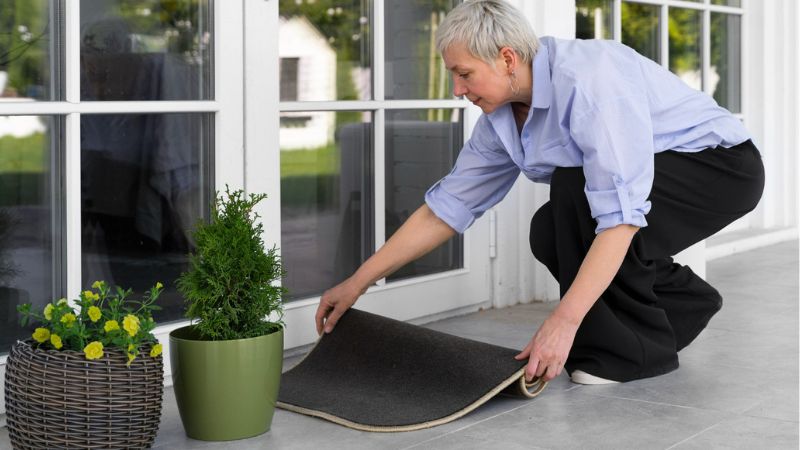
Ensuring a safe living environment for seniors is paramount, especially when it comes to choosing the right flooring materials that minimize the risk of slips and falls. Non-slip flooring options can significantly enhance safety and provide peace of mind for caregivers and family members. In this blog post, we’ll explore some of the best non-slip flooring options ideal for elderly care at home, incorporating medical and healthcare-related considerations.
Importance of Non-Slip Flooring for Elderly Care
As individuals age, their balance and mobility may decline, making them more susceptible to falls and injuries, particularly on smooth or slippery surfaces. Non-slip flooring plays a crucial role in reducing these risks by providing better traction and stability underfoot. It helps create a safer living environment that promotes independence and minimizes the likelihood of accidents.
Best Non-Slip Flooring Options
- Textured Tiles: Opt for tiles with textured surfaces, such as matte or rough finishes, which provide a better grip compared to glossy tiles. Porcelain or ceramic tiles with textured designs offer both style and functionality, ideal for bathrooms, kitchens, and hallways.
- Vinyl Flooring: Vinyl is a popular choice for non-slip flooring due to its water-resistant properties and textured surfaces. It’s available in various styles, including luxury vinyl planks (LVP) and vinyl sheets, making it versatile for different areas of the home.
- Rubber Flooring: Rubber flooring is highly resilient and shock-absorbent, offering excellent traction even when wet. It’s a comfortable and durable option suitable for bathrooms, exercise rooms, and entryways.
- Cork Flooring: Cork is naturally slip-resistant and provides a cushioned surface that is gentle on joints. It’s eco-friendly, antimicrobial, and offers thermal insulation, making it a practical choice for living rooms, bedrooms, and kitchens.
- Carpet with Low Pile: Choose carpets with low pile heights and non-slip backings to minimize tripping hazards. Wool or nylon carpets with textured patterns provide traction and comfort, especially in bedrooms and living areas.
Factors to Consider When Choosing Non-Slip Flooring
- Texture: Look for flooring materials with textured surfaces that enhance grip and prevent slipping, especially in areas prone to moisture or spills.
- Water Resistance: Prioritize water-resistant or waterproof flooring options, particularly for bathrooms and kitchens, to prevent mold growth and maintain durability.
- Maintenance: Consider flooring materials that are easy to clean and maintain, ensuring longevity and hygiene within the home environment.
Installation and Safety Tips
- Ensure proper installation of non-slip flooring by hiring professional installers or following manufacturer guidelines.
- Use area rugs or mats with non-slip backings in high-traffic areas to provide additional traction.
- Regularly inspect and clean flooring surfaces to remove debris or substances that may reduce traction over time.
Choosing the best non-slip flooring options is a proactive step towards creating a safe and supportive living environment for elderly individuals at home. By prioritizing safety considerations and selecting appropriate flooring materials, caregivers and family members can significantly reduce the risk of accidents and promote overall well-being.
Wheelchair Accessibility Made Easy: A Homeowner’s Guide
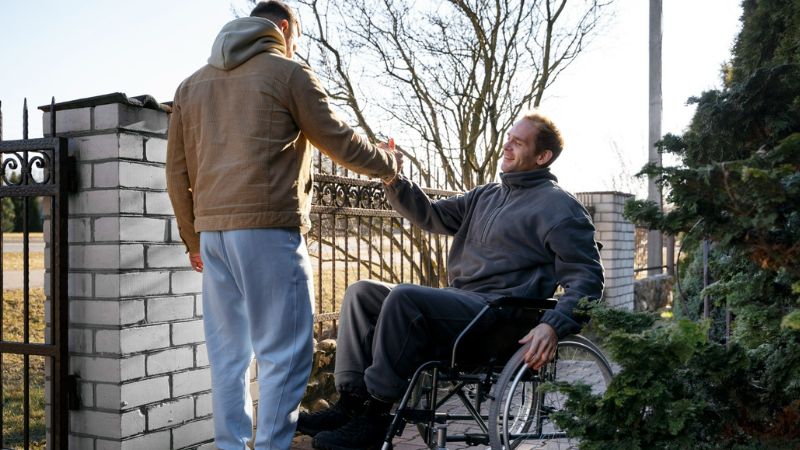
Creating a wheelchair-accessible home can significantly improve the daily life of individuals with mobility challenges. This guide offers practical tips to help homeowners make effective, compassionate changes to their living spaces, ensuring that they cater to the needs of people who use wheelchairs. By understanding and implementing the right modifications, you can foster a more inclusive environment.
Understanding the Basics of Wheelchair Accessibility
Wheelchair accessibility refers to the ability of a space to be navigated and used comfortably and safely by someone in a wheelchair. This involves considering several factors, including door widths, ramp inclines, and the accessibility of fittings and fixtures.
Entry Points: Doorways and Ramps:
Ramps: The First Step
Installing a ramp is the most recognizable modification for wheelchair access. The slope of the ramp should be gentle enough to allow easy movement, ideally at a ratio of 1:12, which means for every inch of height, there should be at least 12 inches of the ramp run. Materials can vary, but surfaces should be non-slip.
Doorways: Widen Your Welcome
A doorway should be at least 32 inches wide to accommodate a wheelchair. If your existing doorframes are too narrow, consider remodeling to remove barriers that can hinder free movement. Lever-style door handles are also recommended as they are easier to use than knobs for people with limited hand strength.
Navigating the Home: Hallways and Flooring:
Hallways
Adequate space in hallways is essential. They should be at least 36 inches wide to allow comfortable wheelchair passage. Removing any obstructions that can cause maneuvering difficulties is also crucial.
Flooring
Choose flooring materials that facilitate wheelchair movement. Hard surfaces such as hardwood, linoleum, or tile are preferable because they offer less resistance than thick carpets, making them easier to navigate on wheels.
Adapting Living Areas:
Living Room
Furniture should be arranged to create clear pathways. Consider using lower tables and placing them within reach of a seated position. Cords should be secured and out of the way to prevent tripping hazards.
Kitchen
Lower countertops and a sink with space underneath them for wheelchair accessibility are ideal modifications. Pull-out drawers and a cooktop with front controls can greatly enhance the usability of the kitchen for individuals with mobility impairments.
Bathroom Modifications:
Roll-in Showers and Grab Bars
A roll-in shower without a curb allows for easy entry and exit. Installing grab bars near the toilet and in the shower area can provide necessary support and increase safety.
Accessible Toilet Height
The toilet height should be adjusted to make transferring from a wheelchair to the toilet easier. An elevated toilet seat or a special toilet designed for wheelchair users can be installed.
Smart Home Technology for Enhanced Accessibility
Incorporating smart technology into your home can greatly enhance accessibility. Voice-activated systems can control lights, locks, and other devices, reducing the need for physical strain and increasing independence.
Emergency Preparedness
Ensure that your home’s emergency plans are accessible. This includes having exits marked and unobstructed, and if necessary, specialized alert systems that accommodate for hearing or visual impairments.
Improving your home’s wheelchair accessibility not only increases the independence and comfort of individuals with mobility impairments but also ensures that your home is a welcoming space for everyone. By taking the steps outlined in this guide, homeowners can make a significant difference in the lives of those who require these modifications.
Remember, consulting with healthcare professionals and considering the specific needs of the user can guide you in making the most effective changes. Making your home accessible is an ongoing process that adapts as new needs and technologies arise.
Lighting for Safety: How to Brighten Up Your Home to Reduce Fall Risks
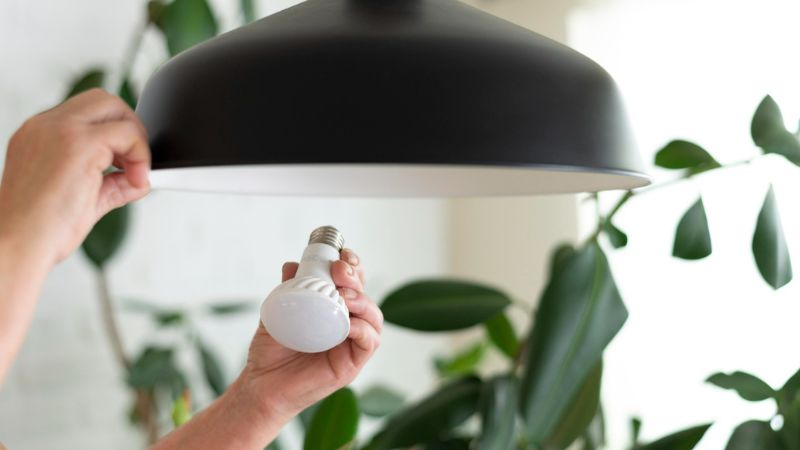
Proper lighting plays a critical role in preventing falls and enhancing safety, particularly for individuals with medical conditions or mobility challenges. Brightening up your home with strategic lighting can significantly reduce fall risks and create a safer living environment. In this blog post, we’ll explore practical tips and insights on using lighting effectively to promote safety and well-being.
Importance of Adequate Lighting for Fall Prevention
Insufficient lighting can obscure obstacles and hazards, increasing the risk of trips and falls, especially for older adults or individuals with vision impairments. Adequate lighting helps improve visibility and spatial awareness, allowing for safer navigation within the home. By optimizing lighting conditions, homeowners can mitigate fall risks and create a more secure living space.
Key Areas to Focus on for Improved Lighting
Entryways and Hallways:
- Install bright overhead lights or wall sconces to illuminate pathways and entry points.
- Use motion-activated lights to ensure immediate visibility upon entering or exiting rooms.
Staircases:
- Install light fixtures at the top and bottom of staircases to illuminate steps.
- Consider using glow-in-the-dark or contrasting tape on stair edges for added visibility.
Bathrooms:
- Use bright vanity lights around mirrors to enhance visibility during grooming tasks.
- Install waterproof, dimmable lights in showers or bathtubs to prevent slips.
Kitchen:
- Install under-cabinet lighting to illuminate countertops and cooking areas.
- Ensure overhead lights are evenly distributed to minimize shadows while preparing meals.
Living Areas:
- Position floor lamps or table lamps near seating areas for task lighting and reading.
- Use adjustable lighting fixtures to control brightness based on specific activities.
Types of Lighting to Consider
Natural Lighting:
- Maximize natural light by keeping windows unobstructed and using sheer curtains.
- Consider installing skylights or light tubes to bring in more daylight.
LED Lighting:
- Opt for energy-efficient LED bulbs that provide bright, natural-looking illumination.
- Choose bulbs with a high color rendering index (CRI) for accurate color representation.
Task Lighting:
- Use task-specific lighting fixtures, such as desk lamps or under-cabinet lights, for focused illumination.
- Position task lights to minimize glare and shadows, especially for detailed tasks.
Additional Tips for Effective Lighting
- Use Contrast: Ensure a contrast between light fixtures and surroundings to enhance visibility.
- Regular Maintenance: Replace burnt-out bulbs promptly and keep light fixtures clean for optimal performance.
- Consider Smart Lighting: Explore smart home lighting systems that allow remote control and automated scheduling.
By optimizing lighting throughout your home, you can create a safer and more comfortable living environment while reducing fall risks. Implementing these lighting strategies not only enhances safety but also contributes to overall well-being and quality of life for residents.
Smart Home Gadgets That Enhance Safety for Elderly Residents
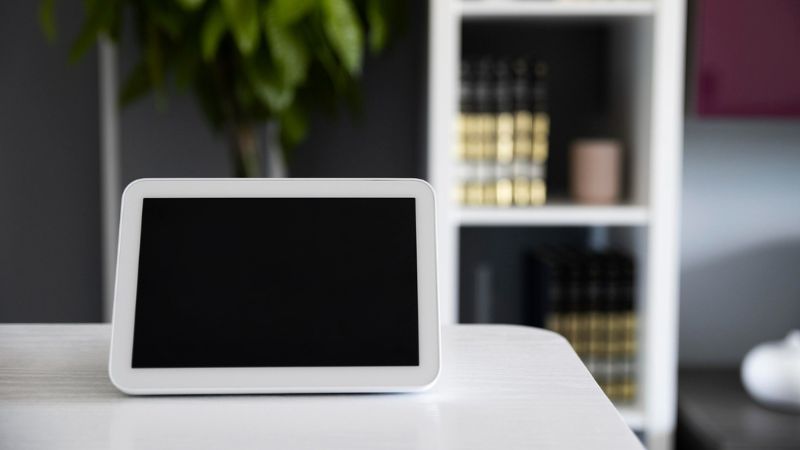
As the population ages, more families are looking for ways to help their elderly loved ones live independently and safely at home. Smart home technology offers innovative solutions to enhance safety, improve comfort, and give family members peace of mind. Here’s a look at some essential smart home gadgets that can help protect and assist elderly residents in their daily lives.
Voice-Activated Assistants: More Than Just Convenience
Voice-activated smart home assistants like Amazon Alexa, Google Home, and Apple HomePod can be extremely helpful for elderly individuals. These devices can perform a variety of tasks hands-free, which is particularly beneficial for those with mobility issues or those who may find technology challenging. Simple commands can control lights, thermostats, and locks, and can even make phone calls, all of which aid in day-to-day living.
Smart Lighting: Preventing Falls
Falls are a leading cause of injury among the elderly. Smart lighting can help reduce this risk by providing adequate, automated lighting to prevent accidents. Motion-sensor lights automatically illuminate rooms and hallways when movement is detected, eliminating the need to search for light switches in the dark. Timers can also be set to ensure lights are on when needed, further preventing falls.
Medical Alert Systems: Instant Assistance
Medical alert systems are designed to provide emergency assistance at the push of a button. Wearable devices can be worn as pendants or bracelets and are equipped with a button that when pressed, connects the user to a medical alert monitoring center. Some advanced models include fall detection technology, which automatically alerts medical personnel if a fall occurs.
Video Monitoring and Security Cameras: Keeping a Watchful Eye
Security cameras and smart doorbells with video monitoring capabilities can enhance safety by allowing elderly residents and their caregivers to see who is at the door without needing to open it. These devices can be monitored from a smartphone or tablet, offering an extra layer of security and reassurance.
Smart Thermostats: Comfort and Safety
Maintaining a comfortable and safe indoor environment is crucial for elderly health. Smart thermostats adjust the temperature automatically based on daily patterns and can be controlled remotely, ensuring that homes are not too cold or overly warm, which can be hazardous to senior health.
Medication Management: Smart Pill Dispensers
Managing medication can be challenging for the elderly, especially for those with multiple prescriptions. Smart pill dispensers remind users when it’s time to take their medication and dispense the right dose, reducing the risk of medication errors, which can be dangerous and costly.
Smart Locks and Security Systems: Simplifying Security
Smart locks and comprehensive security systems can provide peace of mind for both the elderly and their families. These systems allow doors to be locked and unlocked remotely and can be set up to send alerts if doors or windows are left open.
Health Monitoring Devices: Keeping Tabs on Vital Signs
Advanced health monitoring devices can track vital signs like heart rate, blood pressure, and blood oxygen levels. These gadgets sync data to a smartphone application, allowing both the elderly and their caregivers to monitor their health conditions in real-time.
Smart home technology offers a range of tools that can significantly increase the safety and comfort of elderly residents living independently. These devices not only assist in everyday tasks but also provide critical safety features that can prevent accidents and improve emergency response times.
By integrating these technologies into their homes, elderly individuals can enjoy a safer, more comfortable living environment while providing their families with peace of mind. Investing in smart home gadgets is an effective way to ensure that your loved ones can continue to live independently with dignity and security.
Step-by-Step Guide to Creating Safe and Accessible Bathrooms
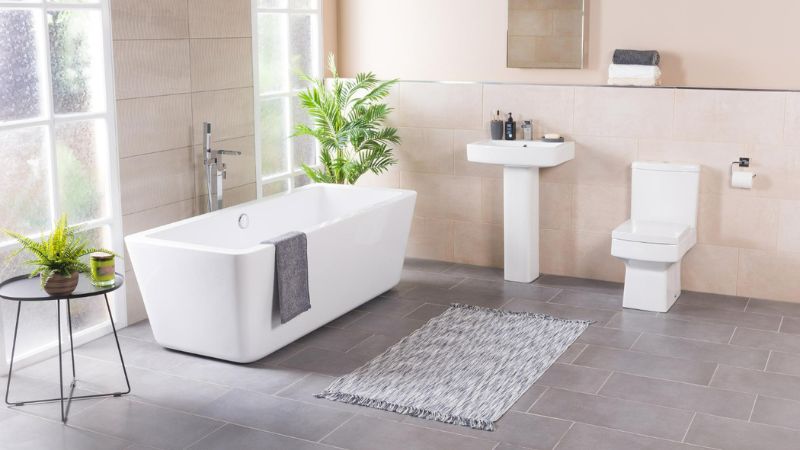
For individuals with mobility issues, seniors, and those with certain health conditions, a safe and accessible bathroom is crucial to maintain independence and ensure safety. This comprehensive guide provides step-by-step instructions to help you transform an ordinary bathroom into a secure and user-friendly space.
Widen Doorways
Start by ensuring that the bathroom doorway is at least 32 inches wide, which is the standard recommendation to accommodate wheelchairs and walkers. If necessary, consider installing offset hinges to widen the doorway without major renovations.
Install Grab Bars
One of the most important features of an accessible bathroom is grab bars. These should be installed in the shower, by the bathtub, and near the toilet. Ensure they are securely anchored to wall studs and placed at a convenient height to help with stability and transfers. Grab bars should be slip-resistant and able to support significant weight.
Use Non-Slip Flooring
Slips and falls in the bathroom are common, but they can be prevented by choosing the right flooring. Non-slip tiles, vinyl, or rubber flooring can provide better grip underfoot. For a simpler fix, non-slip mats can also be placed strategically in high-risk areas such as in front of the sink, shower, and bathtub.
Adjust Toilet Height
Standard toilets may be too low for people with mobility issues. Installing a raised toilet seat can help, or consider replacing the existing toilet with a comfort-height model, which is a few inches taller. This small change can make a significant difference in ease of use and accessibility.
Modify the Shower Area
Transforming your shower for accessibility can involve several steps:
- Roll-in Shower: A roll-in shower without a curb allows easy access for wheelchair users.
- Adjustable Shower Head: An adjustable or handheld shower head enables users to control the direction and height of the water flow.
- Shower Bench: A built-in or fold-down bench in the shower allows individuals to bathe safely without standing.
Lower Sink and Vanity
The sink and vanity area should also be accessible. Consider a pedestal sink or a vanity with open space beneath it for knee clearance. The height of the sink should allow someone in a wheelchair to use it comfortably. Additionally, install a single-handle faucet, which is easier to operate for those with limited hand strength.
Improve Lighting
Adequate lighting is crucial in a bathroom for safety and ease of use. Bright, non-glare lights should be installed in key areas including the shower, over the sink, and near the toilet. Consider simple switches or motion sensors that are easy to operate.
Emergency Response
Consider installing an emergency call system in the bathroom. This could be a pull cord or a button that can be accessed from the floor in case of falls. This system should alert someone in the household or contact emergency services if needed.
Keep Essential Items Within Reach
Store commonly used items like toiletries, towels, and personal care products at an accessible height. Avoid under-sink storage or high shelves that are difficult to reach from a seated position.
Creating a safe and accessible bathroom doesn’t just enhance comfort—it promotes independence and dignity for those with mobility challenges. By following these steps, homeowners can ensure their bathrooms are equipped to support the well-being of all family members, regardless of their physical capabilities. Making these changes can be a worthwhile investment in the home and provide peace of mind knowing that the bathroom is a safe space for everyone.
The Role of Technology in Homecare: Tools That Aid Mobility and Safety
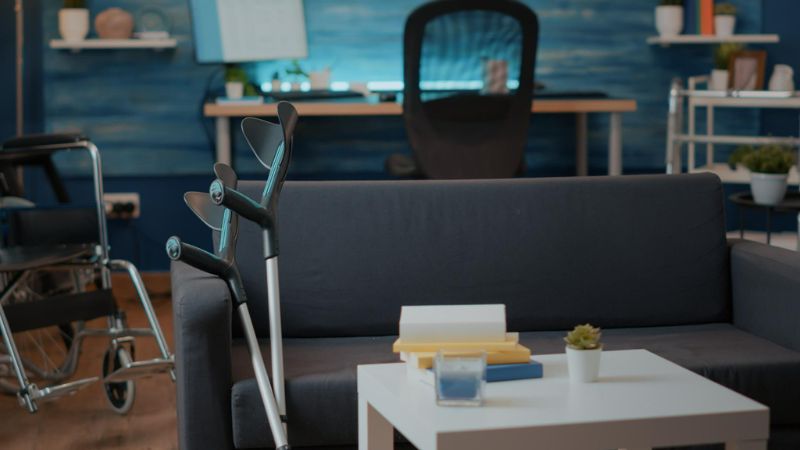
In today’s fast-paced world, technology plays a crucial role in nearly every aspect of life, including home care. With advancements in medical technology, individuals who face mobility challenges or require continuous care can now enjoy a safer and more comfortable life at home. This blog explores various innovative tools and devices that enhance mobility and safety, making home care more effective and efficient.
What is Homecare Technology?
Homecare technology refers to the use of electronic devices and software to provide and manage care within the home. This type of technology is designed to support individuals who are elderly, recovering from surgery, or living with chronic conditions or disabilities. The goal is to promote independence, improve quality of life, and ensure safety at home.
Tools for Enhancing Mobility:
Smart Walkers and Wheelchairs
Smart walkers and wheelchairs are revolutionizing mobility for those with limited movement. Equipped with sensors and automated systems, these devices help users navigate around their homes safely. They can adjust speed, detect obstacles, and even offer navigational assistance, reducing the risk of falls and injuries.
Stair Lifts and Ramps
Installing stair lifts and ramps is an effective solution for homes with multiple levels. Stair lifts provide a secure way to ascend and descend stairs without physical strain, whereas ramps are essential for wheelchair users, making it easier to enter and exit the home.
Transfer Aids
Transfer aids like ceiling lifts and bathing lifts ensure safe and smooth transitions from one position or place to another. These aids are vital for preventing falls and reducing caregiver strain during movements such as getting in and out of bed or a bathtub.
Enhancing Safety at Home:
Emergency Response Systems
Personal emergency response systems (PERS) are wearable devices that allow users to call for help at the push of a button. These systems are connected to a service that can dispatch emergency assistance immediately, providing peace of mind for both the user and their family.
Motion Sensors and Cameras
Incorporating motion sensors and cameras within the home can alert caregivers or family members to unusual activity, or falls. These systems can be monitored remotely, ensuring that help is available whenever it’s needed, without compromising the individual’s privacy.
Medication Management Systems
Automated medication dispensers remind users to take their medication on time and dispense the correct doses. This tool is particularly useful for those with complex medication regimes, reducing the risk of medication errors and improving treatment outcomes.
The Impact of Technology on Homecare
The integration of these technologies into homecare settings has significantly reduced the need for hospital stays and frequent doctor visits. It allows individuals to manage their conditions effectively from the comfort of their homes and provides caregivers with tools to deliver better care. Moreover, these technologies have also given more control and independence to those in need, improving their overall well-being.
As technology continues to evolve, the potential to improve home care and enhance the quality of life for individuals with mobility and safety needs grows. These tools not only offer significant health benefits but also bring greater efficiency and peace of mind to both caregivers and their loved ones. Embracing these technologies can lead to a safer, more independent life for many people, making a profound impact on their daily lives.
Emphasizing the role of technology in homecare not only addresses the immediate benefits but also highlights the long-term improvements in healthcare management and patient autonomy. As we continue to advance technologically, the future of home care looks promising, providing a blend of safety, comfort, and independence.
How to Choose and Install Bed Rails for Home Safety
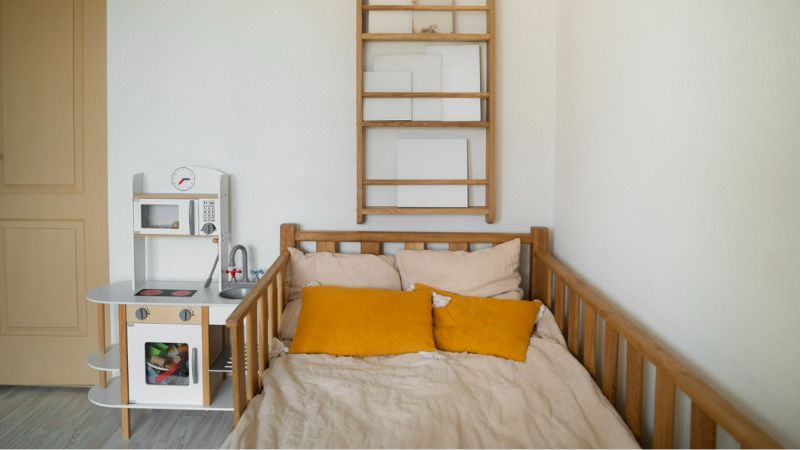
Bed rails are essential safety devices that provide support and prevent falls for individuals with mobility issues, seniors, and those recovering from injuries. Choosing the right bed rails and installing them correctly can significantly enhance home safety and promote independent living. In this blog post, we’ll guide you through the process of selecting and installing bed rails effectively, incorporating medical and healthcare-related insights for optimal safety.
Importance of Bed Rails for Home Safety
Bed rails serve as protective barriers that reduce the risk of accidental falls during sleep or when getting in and out of bed. They offer stability and support for individuals with balance issues or limited mobility, promoting a safe sleeping environment. By installing bed rails, caregivers and family members can provide reassurance and peace of mind to loved ones at home.
Assessing Bed Rail Needs
Identify Specific Needs: Determine the primary reasons for using bed rails, such as preventing falls or assisting with repositioning.
Consider User Preferences: Take into account individual preferences, such as height and design preferences, for optimal comfort and usability.
Choosing the Right Type of Bed Rails
Full-Length Bed Rails:
- Provide continuous coverage along the entire length of the bed, offering maximum protection against falls.
- Ideal for individuals who require comprehensive support and stability while sleeping.
Half-Length Bed Rails:
- Cover only a portion of the bed, typically near the head or foot area, allowing easier access for caregivers.
- Suitable for individuals who need assistance with getting in and out of bed but prefer more open space.
Adjustable Bed Rails:
- Offer flexibility in height and positioning to accommodate different user preferences and bed sizes.
- Allow customization for optimal comfort and ease of use.
Ensuring Safety and Compatibility
Check Bed Compatibility: Ensure that the selected bed rails are compatible with the bed frame and mattress type.
Verify Weight Capacity: Confirm that the bed rails can support the weight of the user to prevent accidents or structural issues.
Installing Bed Rails Correctly
Secure Attachment:
- Follow manufacturer instructions for proper installation and secure attachment to the bed frame.
- Use sturdy hardware and fasteners to ensure stability and prevent shifting or dislodging.
Adjust Height:
- Set the bed rail height at a level that provides adequate support without obstructing movement or causing discomfort.
- Ensure that the bed rail height matches the user’s preferences and needs.
Regular Maintenance and Monitoring
- Inspect Bed Rails: Regularly check bed rails for signs of wear, damage, or loose components.
- Keep Bed Area Clear: Remove clutter and obstacles around the bed to prevent tripping hazards and ensure the safe use of bed rails.
Choosing and installing bed rails effectively is essential for enhancing home safety and promoting independence for individuals with mobility challenges. By following these guidelines and considering specific needs, caregivers can create a secure sleeping environment that prioritizes comfort and well-being.
A Guide to Accessibility Modifications for Home Care Settings
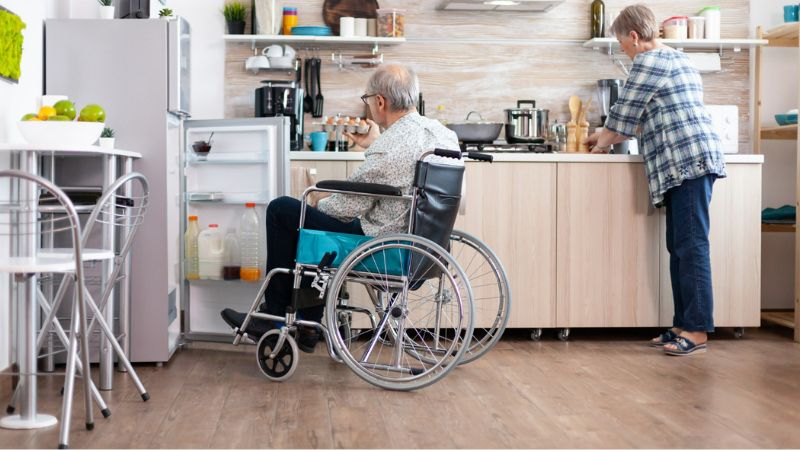
Creating a safe and accessible home environment is essential for individuals with mobility challenges, disabilities, or those who are aging. This guide outlines the key modifications that can transform any home into a supportive, accessible space, fostering independence and ensuring safety for its occupants.
Understanding Home Accessibility
Home accessibility refers to the modifications and adjustments made to a living environment to accommodate people with physical limitations so they can live independently and safely. This is crucial not only for comfort but also for preventing injuries and facilitating care.
Essential Accessibility Modifications:
Widening Doorways
Narrow doorways can be a barrier for wheelchair users or those using walkers. Widening doorways to at least 32 inches allows for easier access throughout the home, promoting a safer and more comfortable environment.
Ramps and Accessible Entrances
Stairs can pose a significant challenge. Installing ramps provides a smooth transition into and out of the home. Make sure the ramps have a gentle incline and are made of non-slip materials to ensure safety in all weather conditions.
Grab Bars and Handrails
Installing grab bars and handrails in critical areas, including beside the toilet, in the shower, and along stairways, helps prevent falls. These should be securely installed to support full body weight and placed at appropriate heights for the user.
Non-Slip Flooring
Reducing the risk of falls is a priority in creating a safe home environment. Replacing flooring with non-slip options or installing carpets with good traction can dramatically decrease fall risks.
Bathroom Modifications
Bathrooms are high-risk areas for falls. Consider installing walk-in tubs or showers with built-in seats and handheld showerheads to enhance safety and autonomy during personal care. Waterproof seating and easy-to-reach controls are also important.
Height-Adjustable Countertops
In the kitchen, height-adjustable countertops are beneficial for wheelchair users. These allow residents to comfortably prepare food and use kitchen appliances without assistance.
Improved Lighting
Adequate lighting is critical in preventing accidents, especially for those with vision impairments. Ensure that all areas of the home, particularly stairways, hallways, and entry points, are well-lit. Consider motion-sensor lights for better energy efficiency and convenience.
Smart Home Technology
Smart home devices such as voice-controlled systems can enhance independence by allowing users to operate lights, thermostats, and other home devices through simple voice commands. Additionally, automated door locks and security systems can increase safety for individuals with mobility issues.
Benefits of Home Modifications
Accessibility modifications not only make daily tasks manageable but also increase the overall safety of the home environment. This fosters greater independence, reduces caregiver strain, and improves the quality of life. It also decreases the likelihood of accidents, thereby minimizing the potential for hospital visits and extensive medical care.
Adapting a home for accessibility is a step towards empowering those with mobility challenges to lead a more independent and secure life. While the process may require some investment, the benefits of increased autonomy and improved safety are invaluable. Remember, each modification should be tailored to the specific needs of its residents, ensuring that their home is not only their haven but also their support system.
As we move towards a more inclusive society, these modifications help integrate care into the daily lives of those who need it most, enabling them to thrive in their own spaces. Embrace these changes for a safer, more accessible home that supports well-being and independence for everyone.
How to Create a Fall-Proof Home Environment for Seniors
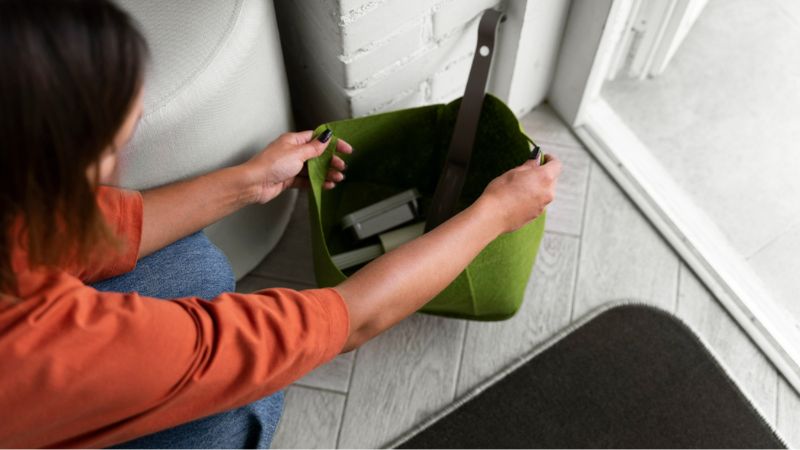
Falls are a major concern for seniors and those caring for them, as they can lead to serious injuries and a decline in independence. Creating a fall-proof environment in the home is essential to ensure the safety and well-being of elderly individuals. This guide provides practical steps to minimize risks and foster a secure living space.
Understanding the Risk
Falls are the leading cause of injury among seniors. Factors such as reduced muscle strength, impaired balance, and vision issues increase the risk of falls. Addressing these risks through home modifications can significantly reduce the likelihood of falls, enhancing both safety and confidence in mobility.
Essential Steps to Fall-Proofing Your Home:
Clear Pathways
Ensure that all pathways in the home are clear of obstacles such as loose rugs, electrical cords, and clutter. Wide, clear paths allow for safe and easy movement throughout the home.
Secure Rugs and Carpets
Secure all rugs and carpets to the floor with double-sided tape or non-slip backings. This prevents the edges from lifting and becoming tripping hazards.
Install Grab Bars and Handrails
Installing grab bars in the bathroom near the toilet and shower, as well as handrails on both sides of stairways, provides support and stability for seniors as they move around their homes.
Improve Lighting
Good lighting is critical in reducing falls. Install bright, easily accessible lights in each room, hallway, and stairway. Consider motion-sensor lights for areas like the bathroom and hallway to automatically illuminate these areas when needed.
Non-Slip Mats in the Bathroom
Place non-slip mats in the shower and beside the bathtub to prevent slipping on wet surfaces. These mats should be firmly anchored to avoid sliding.
Adjust Furniture Layout
Arrange furniture to create ample space for walking. This is particularly important in living areas where seniors spend most of their time. Ensure that furniture does not obstruct pathways to common areas like the bathroom or kitchen.
Lower Shelf Storage
Keep frequently used items on lower shelves that are easily reachable. This avoids the need for seniors to use step stools or reach overhead, actions that could destabilize their balance.
Sturdy Seating Options
Provide stable chairs with armrests to support sitting and standing. Chairs should have a firm seat and back to provide adequate support.
Footwear and Clothing
Encourage the use of non-slip footwear. Shoes with good grip can significantly reduce the risk of slipping, both indoors and outdoors. Also, avoid loose-fitting clothes that could catch or trip.
Regular Health Check-Ups
Regular visits to a healthcare provider for vision and hearing tests, as well as medication reviews, are vital. These check-ups can help manage health conditions that may increase the risk of falls.
Benefits of a Fall-Proof Home
By making these modifications, you can create a safer environment that allows seniors to maintain their independence and mobility. This not only improves their quality of life but also provides peace of mind for their loved ones.
Preventing falls in the home is a critical aspect of caring for the elderly. With thoughtful adjustments and regular maintenance, you can create a secure space that supports the health and happiness of senior family members. Remember, a fall-proof home is more than just a safe space—it’s a setting that nurtures the well-being and dignity of its residents. By taking proactive steps today, you can safeguard their tomorrow.
Top 10 Must-Have Safety Tools for Home Care
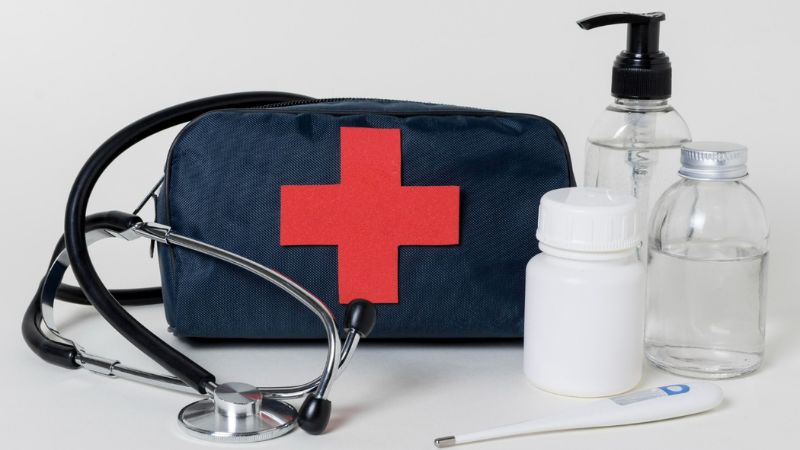
Ensuring the safety and well-being of loved ones in a home care setting is a top priority. With the right tools, you can create a secure environment that promotes independence and peace of mind. Here’s a list of the top 10 must-have safety tools every home care setup should consider to help prevent accidents and manage health care needs effectively.
1. Personal Emergency Response Systems (PERS)
A PERS is a wearable device, like a pendant or bracelet, that allows the user to call for help with the simple press of a button. This tool is essential for immediate assistance in case of a fall or medical emergency, ensuring that help is on the way when needed most.
2. Medical Alert Systems
Similar to PERS, medical alert systems provide 24/7 emergency monitoring and support. These systems can also include features like fall detection, which automatically notifies a monitoring center if a fall is detected.
3. Smoke and Carbon Monoxide Detectors
Installing smoke and carbon monoxide detectors throughout the home is critical for early detection of fires or dangerous gas build-ups. These devices should be tested regularly and placed in key areas like kitchens and bedrooms.
4. Night Lights
Proper lighting is vital to prevent falls, especially during the night. Nightlights in hallways, bathrooms, and bedrooms can help illuminate common paths and reduce the risk of trips and falls after dark.
5. Non-Slip Mats
Place non-slip mats in high-risk areas such as the bathroom, kitchen, and near exterior doors. These mats help prevent slips on wet or slick surfaces, a common cause of home injuries.
6. Grab Bars
Installing grab bars in the bathroom next to the toilet, shower, and bathtub provides extra support for mobility-impaired individuals. These bars help prevent falls by allowing for safe transfers and movements in these slippery environments.
7. Cordless Phones
Having a cordless phone within reach allows individuals to make calls from anywhere in the home without needing to rush to a fixed location, reducing the risk of falls. It’s especially important for those with limited mobility.
8. Adjustable Beds
Adjustable beds help in positioning which is crucial for those with mobility issues or chronic conditions. These beds can be raised or lowered to assist in safe transfers and reduce strain on caregivers.
9. Video Monitoring Systems
Installing video monitoring systems enables caregivers to keep an eye on their loved ones remotely. These systems provide peace of mind when caregivers are not physically present and ensure that help can be provided quickly if needed.
10. First Aid Kit
A well-stocked first aid kit is a must-have in any home care setting. It should include items such as bandages, antiseptic, tape, scissors, and over-the-counter pain relievers. This kit will help manage minor injuries until professional medical care can be obtained if necessary.
Each of these tools plays a vital role in creating a safe and supportive home care environment. By integrating these safety measures, caregivers can enhance the quality of care and provide a more secure and independent lifestyle for their loved ones. Remember, the goal of using these tools is not just to react to potential hazards, but to proactively prevent them, ensuring a safer home for everyone involved.
Easy and Affordable Home Modifications for Elderly Care

Creating a safe and accessible home environment for the elderly doesn’t have to be costly or complicated. Simple modifications can significantly enhance the safety and usability of a home for aging adults, helping them maintain independence and quality of life. This blog post will guide you through some practical and budget-friendly changes that can make a big difference in elderly care at home.
Increase Lighting
Good lighting is essential to prevent falls and ensure safety. Increase the wattage of existing lights, and add plug-in night lights in hallways, bathrooms, and bedrooms. These simple updates help improve visibility and orientation during the night or on cloudy days.
Remove Hazards
One of the easiest and most effective modifications is removing tripping hazards. Secure loose rugs with double-sided tape or remove them entirely. Keep pathways clear of cords and clutter, and ensure all areas of the home are easily navigable.
Install Grab Bars
Grab bars are an inexpensive way to enhance safety in bathrooms. Install them near the toilet, in the shower, and along the bathtub to provide support when transitioning from sitting to standing, or when moving on wet surfaces.
Use Non-Slip Mats
Place non-slip mats in the bathroom, kitchen, and other areas with slick surfaces. These mats can prevent slips and falls, especially in areas prone to getting wet, such as next to the kitchen sink or in the bathroom.
Rearrange Furniture
Organize and arrange furniture to create clear walkways and prevent obstruction. This rearrangement can help prevent falls and make the home more navigable for those with mobility aids such as walkers or wheelchairs.
Adjust Shelving Heights
Lower the shelves in closets and kitchens to make everyday items more accessible. This prevents overreaching or needing to use unstable step stools, reducing the risk of falls.
Lever Handles
Replace doorknobs with lever handles, which are easier for elderly with limited hand strength or arthritis to use. This simple switch can make opening doors much easier and prevent injuries related to strain.
Install a Raised Toilet Seat
A raised toilet seat with arms can make it much easier and safer for aging adults to use the bathroom independently. These seats reduce the distance one has to move when sitting down or standing up, decreasing strain and risk of falls.
Add a Handheld Shower Head
Installing a handheld shower head allows for easier bathing, especially for those who need to sit during the shower. This modification can be paired with a bath seat to enhance safety and independence further.
Pathway Lighting Outdoors
Improve outdoor safety by installing solar-powered lights along pathways and near entryways. These lights ensure that outdoor spaces are well-lit, reducing the risk of falls when going outside in the evening.
These easy and affordable home modifications can greatly increase the safety and accessibility of a home for the elderly, helping them maintain their independence and live comfortably. By implementing these changes, caregivers can ensure that their loved ones can navigate their homes safely and with confidence. Start with the simplest adjustments and gradually work towards more comprehensive modifications to create a fully supportive living environment.
Making Your Bathroom Safer: Tips for Caregivers and Patients
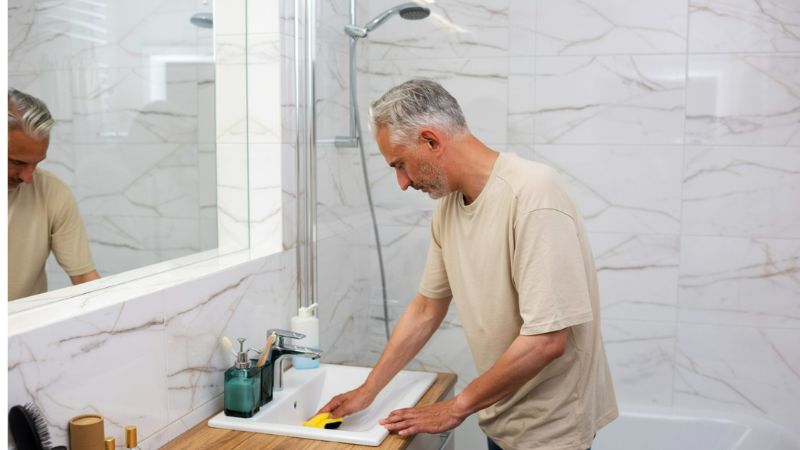
The bathroom can be one of the most hazardous rooms in the home, particularly for the elderly or those with mobility issues. Slippery surfaces, hard fixtures, and small spaces can all pose significant risks. However, with thoughtful modifications and the right safety practices, caregivers can create a safer bathroom environment for their patients. Here are essential tips to enhance bathroom safety for everyone involved.
Install Grab Bars
Installing grab bars next to the toilet, in the shower, and near the bathtub is one of the most effective ways to prevent falls. These bars provide stability and support for movements such as standing up or sitting down. Choose bars with a textured grip to ensure they are easy to hold onto, even when wet.
Use Non-Slip Mats
Place non-slip mats or adhesive treads in the bathtub and on the shower floor. Also, position a non-slip rug outside the tub and near the sink area to prevent slips on wet floors. These mats should have a strong grip and be easy to clean to maintain hygiene and safety.
Adjust Shower Accessibility
Consider installing a handheld shower head, which can be more accessible for someone who must sit during showers. Additionally, installing a shower seat or bench can provide stability and comfort for those who cannot stand for long periods.
Ensure Adequate Lighting
Good lighting in the bathroom is crucial to reduce the risk of trips and falls. Make sure the bathroom is well-lit, with no dark corners. Installing bright, waterproof lights in the shower area can help ensure that all areas are visible.
Lower the Temperature of Your Water Heater
To prevent burns, lower the temperature setting on your water heater. Setting it to 120 degrees Fahrenheit (48 degrees Celsius) can help prevent scalding, which is particularly important for those with sensitive skin or reduced temperature sensitivity.
Install Elevated Toilet Seats
An elevated toilet seat with arms can make it easier for patients to sit down and get up from the toilet without straining. This modification is especially helpful for individuals with arthritis or mobility issues.
Organize Essentials Within Reach
Keep all necessary items within easy reach to prevent overreaching or bending, which can lead to falls. Install shelves or storage units at waist level to store toiletries, towels, and other essentials.
Clear Obstacles
Ensure that the path to and around the bathroom is clear of obstacles that could cause trips. This includes keeping the floor free of clutter and ensuring doorways are wide enough to accommodate mobility aids.
Apply Color Contrast
Use color contrast to make important fixtures more visible. For example, use a dark toilet seat on a light-colored toilet or vice versa. This can help those with vision impairments identify the edges and use the fixtures more confidently.
Regular Maintenance Checks
Regularly check all installed safety features for stability and wear. Make sure that grab bars are securely fastened and that non-slip mats are not worn out. Maintaining these features is crucial to ensuring their effectiveness.
By implementing these safety tips, caregivers can greatly reduce the risks associated with bathroom use for their patients. Each step helps to create a safer, more accessible environment that promotes independence while protecting against common bathroom hazards. Remember, patient safety starts with a proactive approach to modifying environments to fit their needs. With these adjustments, caregivers can provide a safer and more supportive bathroom for everyone.
Navigating Home Safety: A Guide for People with Disabilities
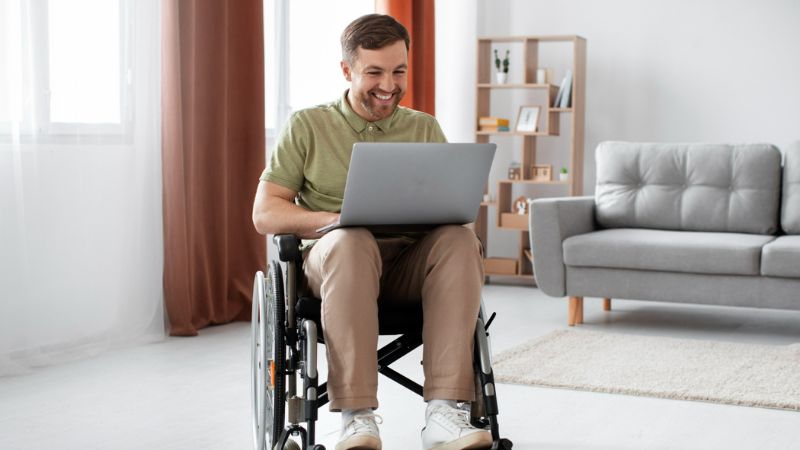
Creating a safe living environment for people with disabilities is not only a necessity but a right. Ensuring that your home is a sanctuary where challenges are minimized and independence is maximized is vital. This comprehensive guide will walk you through the essential steps and modifications needed to make a home safe and accessible for everyone, regardless of their mobility or sensory limitations.
Understanding the Basics of Home Safety
Home safety for individuals with disabilities involves more than just securing the premises against intruders. It encompasses a wide range of considerations—from structural modifications to personal emergency response systems—that cater to the unique needs of those with physical, sensory, or cognitive disabilities.
Assessing Home Safety Needs
Every individual’s needs are different, and tailoring your home safety plan requires a detailed assessment. Consider consulting with an occupational therapist or a certified home safety specialist who can provide personalized recommendations based on the specific disabilities of the household members.
Common Risks and Their Solutions
A safe home for someone with disabilities mitigates risks that could exacerbate their condition or pose additional hazards. For instance, ensuring that flooring is slip-resistant can prevent falls, and installing adequate lighting can help those with visual impairments navigate more safely.
Essential Safety Modifications
To truly make a home accessible and safe, certain modifications might be necessary. These changes not only enhance safety but also promote independence by facilitating easier navigation and use of home features.
Doorways and Hallways
Widening doorways and hallways can accommodate wheelchairs and walkers, making it easier to move around the house without obstacles. Lever-style door handles are also a beneficial upgrade for individuals with limited hand strength.
Ramps and Lifts
For homes with steps, installing a ramp can provide a safe and convenient way for wheelchair users to enter and exit. If a home has multiple levels, a chair lift or a personal elevator may be a viable option.
Bathroom Safety
The bathroom is one of the most hazardous rooms in the home for people with disabilities. Installing grab bars, a walk-in bathtub, or a zero-entry shower can significantly reduce the risk of falls. Non-slip mats and a handheld showerhead are also practical additions.
Technology for Enhanced Home Safety
Advancements in technology have paved the way for innovative solutions that boost home safety for people with disabilities. From smart home systems that allow for voice-activated control of lights, locks, and appliances to emergency response devices that can be worn as bracelets or necklaces, technology can play a crucial role in creating a safer home environment.
Home Automation
Smart home technology can automate many aspects of home management, providing comfort and security for people with disabilities. Voice or smartphone app-controlled systems can adjust thermostats, lock doors, and manage lights, reducing the need to perform these tasks manually.
Security Systems
Security systems with cameras, motion detectors, and 24/7 monitoring can provide peace of mind for individuals with disabilities and their families. These systems can often be customized and controlled via mobile apps, making them highly accessible.
Daily Living Aids and Emergency Preparedness
Equipping your home with the right tools and being prepared for emergencies is crucial. This section covers the essential aids and strategies to enhance daily living and ensure safety during unexpected situations.
Emergency Kits and Plans
Every home should have an emergency kit that includes basic supplies like water, food, medications, and first aid materials. Additionally, having a clear, practiced evacuation plan that considers the disabilities of all household members is essential.
Utility Safety
Utility safety is particularly important in the homes of individuals with sensory or cognitive impairments. Simple devices like stove turn-off products and automatic shut-off valves for water can prevent accidents and improve safety.
Community and Resources
No one should have to navigate home safely alone. There are numerous resources and community support networks available to help individuals with disabilities and their families make their homes safer.
Local Support Services
Many communities offer services such as home modification programs, grants for accessibility improvements, and local workshops on home safety. These resources can provide valuable assistance and information for creating a safer home environment.
Legal Rights and Advocacy
Understanding and advocating for the legal rights of people with disabilities is crucial. This includes ensuring compliance with the Americans with Disabilities Act (ADA), which provides guidelines for accessible home designs.
Navigating home safety with a disability doesn’t have to be an overwhelming process. With the right modifications, technologies, and supports in place, individuals with disabilities can lead safe, comfortable, and independent lives at home. Remember, the goal is not just to adapt to the environment, but to enhance it in a way that promotes autonomy and dignity.
Kitchen Safety for the Elderly: Modifications That Matter
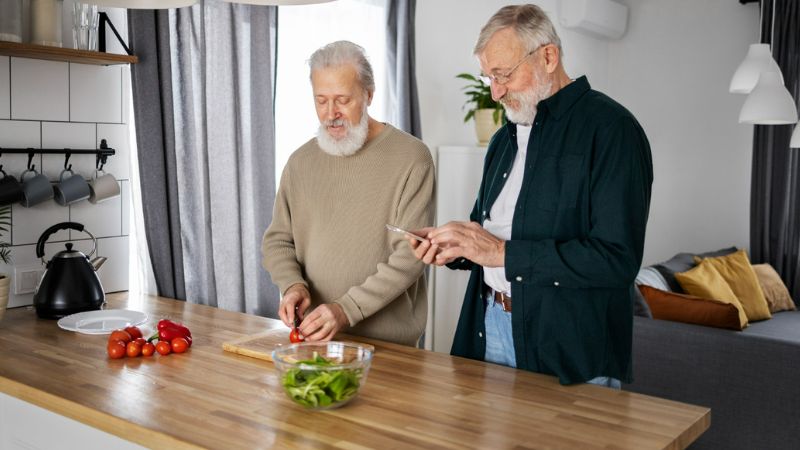
As we age, our homes, particularly our kitchens, can become spaces filled with potential hazards. For elderly individuals, ensuring safety in the kitchen is paramount to maintaining independence and preventing accidents. This blog post will explore practical and essential modifications that can make the kitchen a safer place for older adults.
Understanding the Risks
The kitchen is often considered the heart of the home but can also be a zone of high risk for seniors. Common dangers include slips, trips, and falls due to spills or loose rugs; burns from hot surfaces or liquids; and injuries from using sharp utensils or heavy pots. Enhancing safety can significantly reduce these risks.
Essential Kitchen Modifications
To create a safer kitchen environment for the elderly, consider implementing the following modifications:
Improve Lighting
Good lighting is crucial in reducing the risk of accidents. Upgrade overhead lights with brighter bulbs and consider adding under-cabinet lighting to illuminate countertops. This helps in reducing shadows and improving visibility, making it easier to handle kitchen tasks safely.
Adjust Cabinet Heights
Reaching high or bending low can be challenging and risky for seniors. Adjust the heights of cabinets to make them more accessible. Install pull-down shelves in upper cabinets and pull-out shelves in lower cabinets to minimize the need for stretching or bending.
Slip-Resistant Flooring
Kitchen floors should be made slip-resistant to prevent falls, which are a common cause of injury among the elderly. Options include installing anti-slip mats or choosing flooring materials that provide better grip underfoot such as textured vinyl or non-slip tiles.
Safe Cooktops and Ovens
Consider replacing traditional stoves with induction cooktops that only heat when in contact with magnetic cookware. This reduces the risk of burns. For ovens, wall-mounted units that are positioned at waist height eliminate the need to bend down, making them easier and safer to use.
Automatic Shut-off Devices
To prevent fires, install automatic shut-off devices on ovens and stovetops. These devices can detect when a stove has been left on by mistake and turn it off automatically. This is particularly useful for seniors who may have memory lapses.
Easy-to-Use Utensils
Ergonomically designed utensils can ease the strain on aging hands. Look for utensils with large, non-slip handles and lightweight construction. These modifications can make cooking less physically taxing and prevent strain injuries.
Clear and Simple Storage
Organize kitchen tools and ingredients in clearly labeled, easy-to-reach locations. Avoid overhead storage when possible and use drawer dividers for better organization. This reduces the need to search through cluttered cabinets, which can be frustrating and unsafe.
Making thoughtful modifications to the kitchen can significantly enhance safety for elderly individuals, helping them maintain their independence and well-being. By addressing the unique challenges posed by aging, families can ensure that their loved ones continue to enjoy the heart of their home safely and comfortably. Simple changes, combined with good practices, can make all the difference in creating a secure and functional kitchen environment for the elderly.
Preventing Injuries at Home: Essential Advice for Caregivers
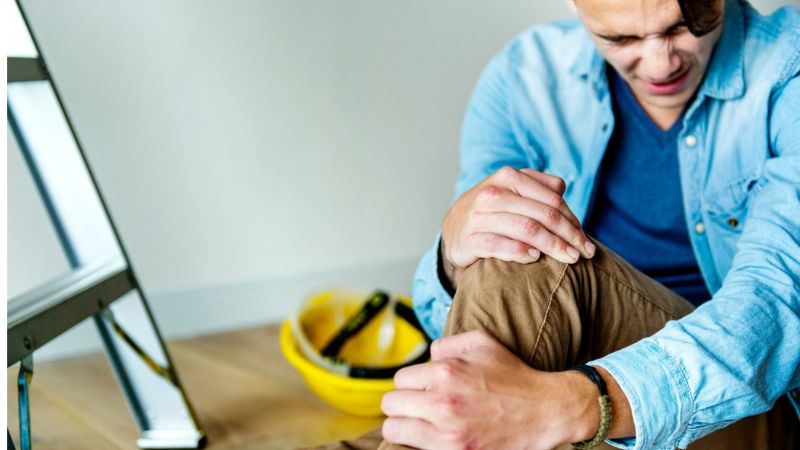
For caregivers, creating a safe living environment is critical to prevent injuries and ensure the well-being of those they care for. This blog post offers practical advice to help caregivers enhance home safety for the elderly, those with disabilities, or anyone in need of extra care.
Understand the Risks
The first step in preventing injuries is recognizing potential hazards in the home. Risks vary depending on the individual’s age, mobility, and overall health condition, but common issues include slips, trips, falls, and mishandling of household appliances.
Tips for Creating a Safer Home Environment
Here are some effective strategies to help caregivers prevent injuries at home:
Keep Walkways Clear
Ensure all walkways and corridors are free of obstructions like loose wires, small furniture, and clutter. This reduces the risk of trips and falls, which are among the most common household accidents, especially for the elderly.
Enhance Lighting
Good lighting is vital for safety. Install bright lights in hallways, staircases, bathrooms, and bedrooms. Consider night lights to guide the way during the evening or early morning hours when it is still dark.
Secure Rugs and Carpets
Loose rugs and carpets can easily cause falls. Secure them to the floor with double-sided tape or use slip-resistant backings to keep them in place.
Install Safety Devices
Equip bathrooms with grab bars next to the toilet and in the shower area to help prevent slips and falls. Additionally, consider installing bed rails to assist with getting in and out of bed safely.
Regular Medication Review
Some medications can increase the risk of falls by causing dizziness or drowsiness. Regularly review the medications your loved one takes with their healthcare provider, discussing potential side effects and interactions that might affect balance or cognitive function.
Adapt to Mobility Needs
If the person you care for uses a mobility aid, like a walker or wheelchair, ensure that your home accommodates these tools. This might include widening doorways, installing ramps, or arranging furniture to create clear paths of travel.
Safe Kitchen Practices
Kitchens are high-risk zones. Keep all sharp tools in a safe place and ensure that appliances are within easy reach. Avoid using floor polish or wax to keep the floor from becoming slippery, and place commonly used items in easy-to-reach locations.
Emergency Preparedness
Make sure there are working smoke detectors and carbon monoxide detectors in the home. Keep a fire extinguisher accessible, and make sure everyone knows how to use it. Additionally, prepare a list of emergency contact numbers and a medical information sheet, and keep them in a visible and consistent place.
Preventing injuries in the home is an ongoing process that requires vigilance and regular updates to safety measures as the needs of the person being cared for evolve. By following these tips, caregivers can create a safer environment that reduces the risk of accidents and enhances the quality of life for those they look after. Remember, the safety you provide helps maintain independence and peace of mind for both the caregiver and the cared-for alike.
How to Safely Modify Stairs for Elderly Residents

Stairs can be one of the most challenging areas in a home for elderly residents. As mobility and balance decline with age, climbing stairs becomes not just difficult but also hazardous. This blog post provides step-by-step guidance on how to safely modify stairs to accommodate the needs of elderly residents, helping to prevent falls and other injuries.
Understanding the Risks
Falls are the leading cause of injury among older adults, and stairs present a significant risk. Poor lighting, lack of sturdy handrails, and slippery surfaces are common issues that can lead to accidents. Addressing these factors is crucial in creating a safer environment for the elderly.
Steps for Modifying Stairs
Enhancing stair safety involves several modifications; from simple additions to more significant renovations. Here’s how you can make stairs safer for elderly individuals:
Improve Lighting
Good lighting is essential for safety on stairs. Install bright lights at the top and bottom of the stairs and consider lights along the staircase itself. Automatic lights that turn on when someone approaches the stairs are an excellent option to ensure the stairs are always well-lit when needed.
Install Handrails
Handrails provide support and stability for elderly individuals as they climb up and down the stairs. Install handrails on both sides of the staircase, if possible. Ensure the rails are sturdy, securely fastened, and at an appropriate height (usually about 34 to 38 inches from the stair treads).
Add Non-Slip Treads
Stairs can be slippery, especially when wearing socks or slippers. Adding non-slip treads can significantly increase traction and prevent slipping. These treads are available in various materials, such as rubber, carpet, or adhesive strips, and can be chosen to match the home’s décor.
Ensure Proper Stair Tread Depth and Riser Height
The dimensions of stair treads and risers (the vertical part of the stair) can contribute to stair safety. For elderly residents, having uniform tread depth and riser height is important to prevent missteps. The standard riser height is about 7 inches, and the tread depth should be at least 11 inches.
Reduce Staircase Clutter
Keep staircases clear of any objects that could become tripping hazards. This includes items like shoes, books, and other personal belongings. A clear path ensures that nothing impedes the use of handrails or steps themselves.
Consider Stair Lifts or Ramps
For residents who find stairs extremely difficult or unsafe, installing a stair lift or converting stairs into a ramp may be the best option. Stair lifts are mechanical devices that carry people up and down stairs on a seat that glides along a track attached to the stair treads. Ramps, on the other hand, are a more permanent modification but ideal for those using wheelchairs or walkers.
Modifying stairs to make them safer for elderly residents is a vital step in preventing falls and other related injuries.
By improving lighting, installing handrails, adding non-slip treads, ensuring uniform stair dimensions, keeping the area clutter-free, and possibly incorporating lifts or ramps, caregivers can greatly enhance the safety and accessibility of stairs at home. These changes can help maintain the independence of elderly individuals while keeping them safe in their living environment.
Doorway Modifications for Wheelchair and Walker Users
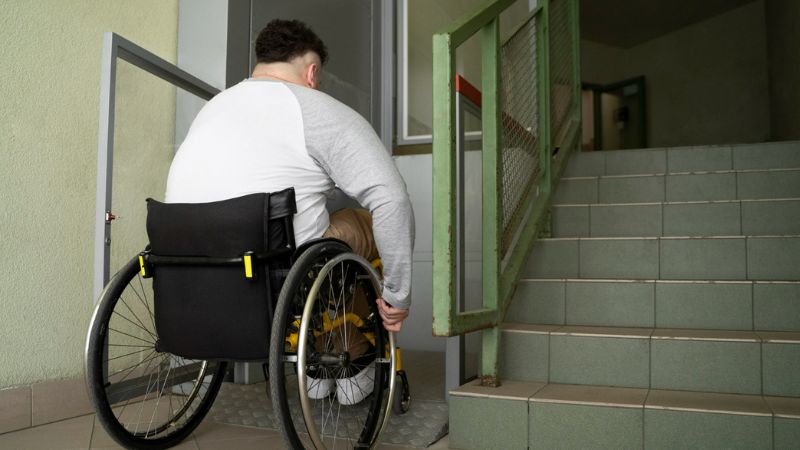
Ensuring easy access through doorways is essential for individuals using wheelchairs or walkers. Proper doorway modifications can significantly enhance mobility and independence, allowing for safer and more comfortable navigation within the home. This blog post will guide you through the essential modifications needed to make doorways more accessible for wheelchair and walker users.
Understanding the Standard Requirements
Before modifying doorways, it’s important to understand the standard dimensions that accommodate wheelchairs and walkers. The Americans with Disabilities Act (ADA) recommends doorways to be at least 32 inches wide when the door is open at 90 degrees. However, a width of 36 inches is ideal for easier access.
Essential Doorway Modifications
Here are several key modifications that can make doorways more accessible for individuals using mobility aids:
Widen Doorways
If existing doorways are too narrow, widening them can provide easier access. This typically involves altering the door frame and may require professional help to ensure structural integrity is maintained. Aim for a minimum width of 32 inches, though 36 inches is preferred for maximum comfort.
Install Swing-Away Hinges
Swing-away or offset hinges are a simpler alternative to widening a doorway. These hinges allow the door to swing completely clear of the opening, effectively increasing the usable width by about two inches. This is a cost-effective solution that can make a significant difference without major renovations.
Lower Door Handles and Locks
For those who use a wheelchair, standard door handles and locks might be too high to reach comfortably. Lowering them to an accessible height (typically around 34 to 40 inches from the floor) can help wheelchair users operate doors more independently.
Use Lever Handles Instead of Knobs
Lever handles are much easier to operate than knobs, especially for individuals with limited hand strength or dexterity. Switching to lever handles can make opening and closing doors significantly easier for both wheelchair and walker users.
Remove Thresholds or Install Ramps
Thresholds can be a major obstacle for wheelchairs and walkers. If possible, remove them completely to create a flat transition. If removal isn’t an option, installing a small ramp can provide a gradual transition that is much easier to navigate.
Add Automatic Door Openers
Automatic door openers can greatly enhance accessibility for wheelchair users. These devices allow the door to open with the push of a button, making it easier for those with limited mobility to enter and exit rooms without physical strain.
Consider Pocket Doors
In situations where swinging doors are impractical, pocket doors can be an excellent alternative. These doors slide into the wall, saving space and minimizing the effort needed to open and close doors.
Modifying doorways to accommodate wheelchair and walker users is a critical step in creating a barrier-free home. These modifications not only enhance mobility but also promote independence and improve the quality of life for individuals with mobility challenges.
By widening doorways, installing appropriate hinges, adjusting handle heights, and considering automated solutions, homes can become more accessible and welcoming for everyone. Remember, while some of these modifications can be done as DIY projects, others might require professional assistance to ensure they meet safety standards and are done correctly.
Leveraging Technology for Safer Elderly Care at Home

As the population ages, the need for effective and safe elderly care solutions becomes increasingly important. Technology can play a pivotal role in ensuring the safety and well-being of seniors living at home. This blog post explores how modern technological solutions can be used to enhance elderly care, providing peace of mind for both seniors and their caregivers.
Understanding the Needs of Elderly Care
Elderly individuals often face various challenges related to mobility, health monitoring, and emergency response. These challenges can increase the risk of falls, medical emergencies, and other health-related issues. Technology can help mitigate these risks by providing tools that assist in monitoring, alerting, and aiding seniors in their daily lives.
Essential Technological Tools for Elderly Care:
Personal Emergency Response Systems (PERS)
Personal emergency response systems are wearable devices that allow elderly users to call for help at the push of a button. These devices are typically worn as pendants or bracelets and are connected to a 24/7 monitoring service. In the event of a fall or medical emergency, help can be summoned immediately, reducing response times and potentially saving lives.
Smart Home Devices
Smart home technology can be incredibly beneficial for elderly care:
- Automated lighting: This can help prevent falls by ensuring that homes are well-lit, reducing the risk of accidents in dimly lit areas.
- Voice-activated systems: Devices like Amazon Echo or Google Home allow seniors to control lights, thermostats, and other appliances through voice commands, minimizing the need to move around.
- Smart locks: These provide secure, keyless entry, allowing caregivers to enter the home if needed without compromising security.
Health Monitoring Devices
Wearable health devices can track vital signs such as heart rate, sleep patterns, and physical activity. More advanced systems can even monitor blood pressure and glucose levels. This information can be shared with healthcare providers in real time, allowing for prompt adjustments in care plans.
GPS Trackers
For seniors with conditions like dementia who may wander or get lost, GPS trackers can be a lifeline. These devices can be attached to clothing or worn on the wrist, enabling caregivers to locate the individual quickly and easily via smartphone apps.
Medication Management Systems
Automated medication dispensers remind seniors when it’s time to take their medicine and dispense the correct doses, reducing the risk of medication errors, which are a common concern among the elderly.
Video Monitoring Systems
Video monitoring can provide caregivers the ability to check in on seniors remotely. Cameras can be installed in common areas of the home to monitor the senior’s activities, ensuring they are safe throughout the day.
Leveraging technology for elderly care at home not only enhances the safety and quality of life for seniors but also provides caregivers with tools to manage care more effectively. As technology continues to evolve, the potential to improve elderly care expands, making it possible to address a wide range of health and safety challenges more efficiently.
Whether it’s through emergency response systems, health monitoring, or smart home automation, technology is reshaping the landscape of elderly care, offering solutions that protect and empower our aging population.
Strategies for Safe and Accessible Home Storage Solutions
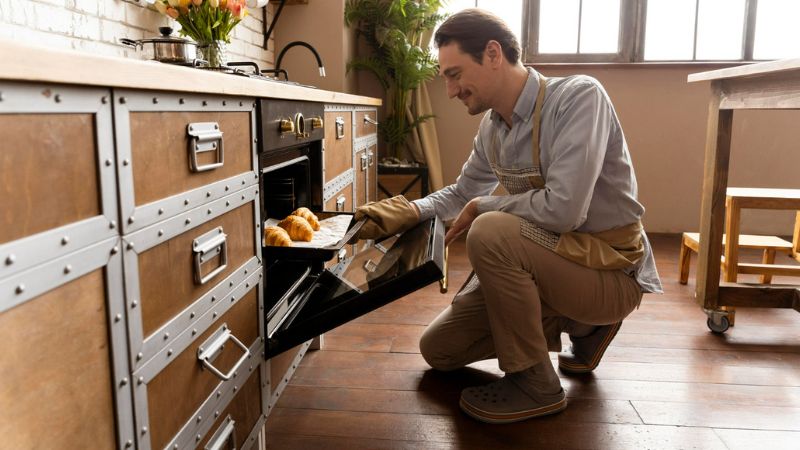
Creating a home environment that is both safe and accessible is essential, especially for those with mobility challenges or seniors living independently. Proper storage solutions can significantly reduce the risk of falls and injuries while making daily tasks easier and more efficient. This blog post explores effective strategies for implementing safe and accessible storage solutions in your home.
Understanding the Importance of Accessible Storage
Accessible storage is about more than convenience; it’s a crucial aspect of home safety. Inaccessible storage can lead to overreaching, bending awkwardly, or using unstable objects to climb on, all of which increase the risk of falls. By reorganizing and adjusting home storage, you can create a safer living space.
Top Strategies for Safe and Accessible Home Storage
Here are some key strategies to enhance home safety through better storage solutions:
Lower Storage for Frequently Used Items
Place items that are used daily within easy reach. This usually means storing them at waist level to prevent bending and reaching. Utilize lower cabinets in the kitchen and bathroom for everyday essentials like dishes, cooking ingredients, toiletries, and towels.
Install Pull-Out Shelves and Lazy Susans
Pull-out shelves and Lazy Susans in cabinets allow easy access to items without the need to reach deep into the back of a cupboard. These are particularly helpful in the kitchen for accessing pots, pans, and other cooking items, reducing the risk of pulling a muscle or losing balance.
Use Clear, Labeled Containers
Store items in clear containers with large, readable labels. Not only does this help in identifying contents quickly, but it also reduces the time spent searching through multiple containers, minimizing the risk of items falling or causing clutter.
Optimize Closet Storage
In the bedroom, organize closets so that the most frequently used items are at the front and a reachable height. Consider a closet organization system with adjustable rods and shelves to accommodate different item sizes and to change the layout as needs change.
Secure Rugs and Mats
Place non-slip mats or secure rugs with double-sided tape in storage areas such as closets and pantries. This helps prevent slips and trips, which are common when items are being taken out or put away.
Enhance Lighting in Storage Areas
Good lighting in storage areas is essential for safety. Install bright, overhead lights in closets, pantries, and cabinets to help identify and retrieve items easily. Consider motion-sensor lights that automatically turn on when the area is being used.
Utilize Vertical Space with Caution
While utilizing vertical space can be an efficient use of area, it should be done with caution. Avoid placing heavy items on high shelves. If higher storage is necessary, use a sturdy step stool with a handle, and always ensure someone is nearby to assist if needed.
Adjustable Shelving
Use adjustable shelving to customize storage areas based on the user’s height and mobility. This flexibility allows for the storage system to evolve with the user’s needs, making it easier to reach items safely over time.
Properly designed storage solutions not only make homes tidier but significantly safer and more accessible, particularly for those with limited mobility or the elderly. Implementing these strategies can prevent injuries and make daily routines more manageable. By rethinking storage from the perspective of accessibility and safety, homeowners can create a more comfortable and secure living environment.
Making Everyday Tasks Easier: Tools and Tips for Caregivers

Caregiving is a demanding role that requires patience, skill, and the right tools. Whether you’re caring for an elderly parent, a spouse with a disability, or a loved one recovering from surgery, your goal is to provide the best care while also looking after your well-being. This blog post explores practical tools and tips to help caregivers manage daily tasks more efficiently and safely.
Understanding Caregiver Needs
Caregivers often handle a variety of tasks that can be physically and emotionally draining. These tasks might include personal care, household chores, medication management, and transportation. Using the right tools and strategies can help reduce the strain and increase the quality of care provided.
Essential Tools and Tips for Caregivers
Here are some invaluable tools and tips that can make caregiving tasks easier and safer:
Adaptive Clothing
Dressing a loved one can be a challenging task, especially if they have limited mobility or experience pain during movement. Adaptive clothing features convenient designs such as Velcro closures, magnetic buttons, and open-back designs, which make dressing and undressing much easier and less uncomfortable for both the caregiver and the care recipient.
Grabber Tools
These handy tools are perfect for picking up objects that are too high or too low to reach comfortably. A grabber tool can prevent the caregiver from straining their back and helps maintain a safer environment by easily retrieving dropped items.
Swivel Cushions
Swivel cushions are a great aid for transferring a care recipient from a wheelchair to a car, bed, or chair. These cushions reduce the physical effort required by allowing the person to easily turn into the desired position without twisting their body.
Non-Slip Mats
Placing non-slip mats in strategic areas such as the bathroom, kitchen, and along bedside areas can significantly reduce the risk of falls. These mats provide extra grip and stability for both the caregiver and the care recipient.
Shower Stools and Handheld Showers
Bathing can be one of the more difficult caregiving tasks. Shower stools provide a safe place for the care recipient to sit while bathing, reducing the risk of falls. Handheld showers allow for better control and efficiency, making it easier to bathe someone who is seated.
Medication Dispensers and Reminders
Managing medications is critical but can be complicated. Automated medication dispensers and reminders can help ensure that the right doses are taken at the right times. These devices can alert both the caregiver and the care recipient when it’s time to take medications, reducing the chance of missed or double doses.
Meal Preparation Aids
Kitchen tasks can be streamlined with the use of ergonomic tools designed to make cooking and meal preparation less taxing. Tools like electric can openers, ergonomic knives, and food processors can save time and reduce the physical effort required.
Educational Resources and Support Networks
Knowledge is power in caregiving. Utilize online courses, local workshops, and support groups to gain more insights and support from other caregivers. Sharing experiences and solutions can provide emotional relief and valuable tips.
By incorporating these tools and tips into your caregiving routine, you can enhance the care you provide and make daily tasks more manageable. Remember, taking care of yourself is just as important as taking care of others. Utilizing these aids not only helps your loved one but also preserves your health and well-being as a caregiver.
Guide to Non-Slip Solutions for Home Safety
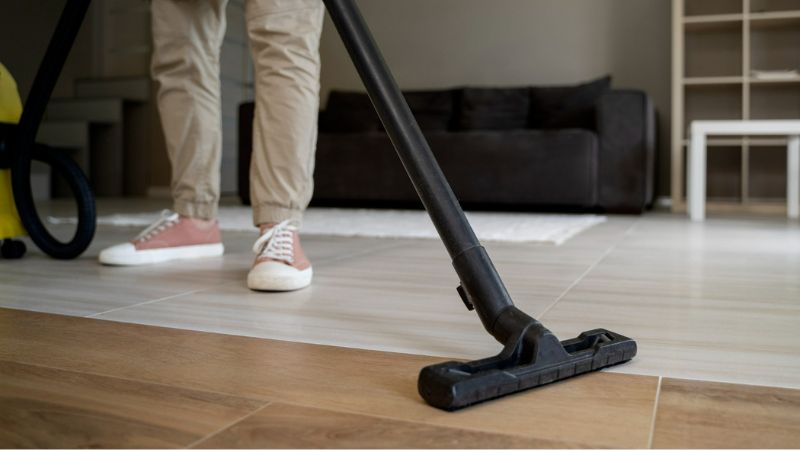
Ensuring your home is safe means preventing slips and falls, which are among the leading causes of injury for all age groups, especially the elderly. Implementing non-slip solutions throughout your living spaces can significantly reduce the risk of accidents. This blog post offers a comprehensive guide to non-slip solutions that can help make your home a safer place for everyone.
Understanding the Risks of Slips and Falls
Slips and falls can lead to serious injuries, such as fractures, head injuries, and prolonged mobility issues. These accidents are particularly hazardous for older adults, who may have diminished balance and fragile bones. Enhancing floor safety is a proactive approach to reducing these risks and ensuring that all household members can navigate their homes safely.
Effective Non-Slip Solutions for Every Area of Your Home
Here’s how you can integrate non-slip solutions throughout various areas of your home:
Entrances and Exits
Water and dirt often accumulate at entryways, making these areas slippery. Place non-slip mats on both the inside and outside of all exterior doors to catch moisture and debris. Ensure these mats have a rubber backing to prevent movement.
Bathroom Safety
Bathrooms are high-risk zones due to the moisture present:
- Bath Mats: Use rubber-backed bath mats outside of the shower and bath area to absorb water and provide a safe, non-slip surface.
- Shower and Tub Mats: Place non-slip mats or stickers inside the bathtub and shower floor to prevent slipping while bathing.
- Toilet Mats: Small non-slip rugs or mats around the toilet area can prevent slips on wet floors.
Kitchen Areas
Spills are common in the kitchen and can quickly become slip hazards:
- Floor Mats: Deploy anti-fatigue, non-slip kitchen mats in areas where water spillage is likely, such as in front of the sink and stove.
- Spill Management: Clean up any spills immediately to maintain safety and consider using absorbent, non-slip cloths for drying dishes.
Staircases
Stairs should have good traction because slipping here can be particularly dangerous:
- Carpet Treads: Install non-slip carpet treads on each step to provide additional grip.
- Non-Slip Tape: Clear or colored non-slip adhesive tape can also be used to cover the edges of wooden or tiled steps.
Living Areas
In living rooms and bedrooms, area rugs can easily slip underfoot:
- Rug Pads: Place non-slip pads under area rugs to keep them securely in place, especially on hardwood or tile floors.
- Furniture Stability: Ensure that furniture does not slide when leaned against by using non-slip rubber pads under the legs.
Flooring Choices
Choosing the right flooring can inherently reduce slip risks:
- Textured Tiles: Opt for textured or matte-finish tiles instead of glossy ones to increase traction.
- Wooden Flooring: If you prefer wooden floors, go for those with a textured finish, or consider using strategically placed area rugs with non-slip backing.
Non-slip solutions are essential for creating a safe home environment, particularly if you have elderly family members or young children. By addressing the slip hazards in your home, you can prevent accidents and ensure that your living space is secure and comfortable for everyone. Investing in these solutions not only protects your loved ones but also brings peace of mind knowing your home is a safer place.
